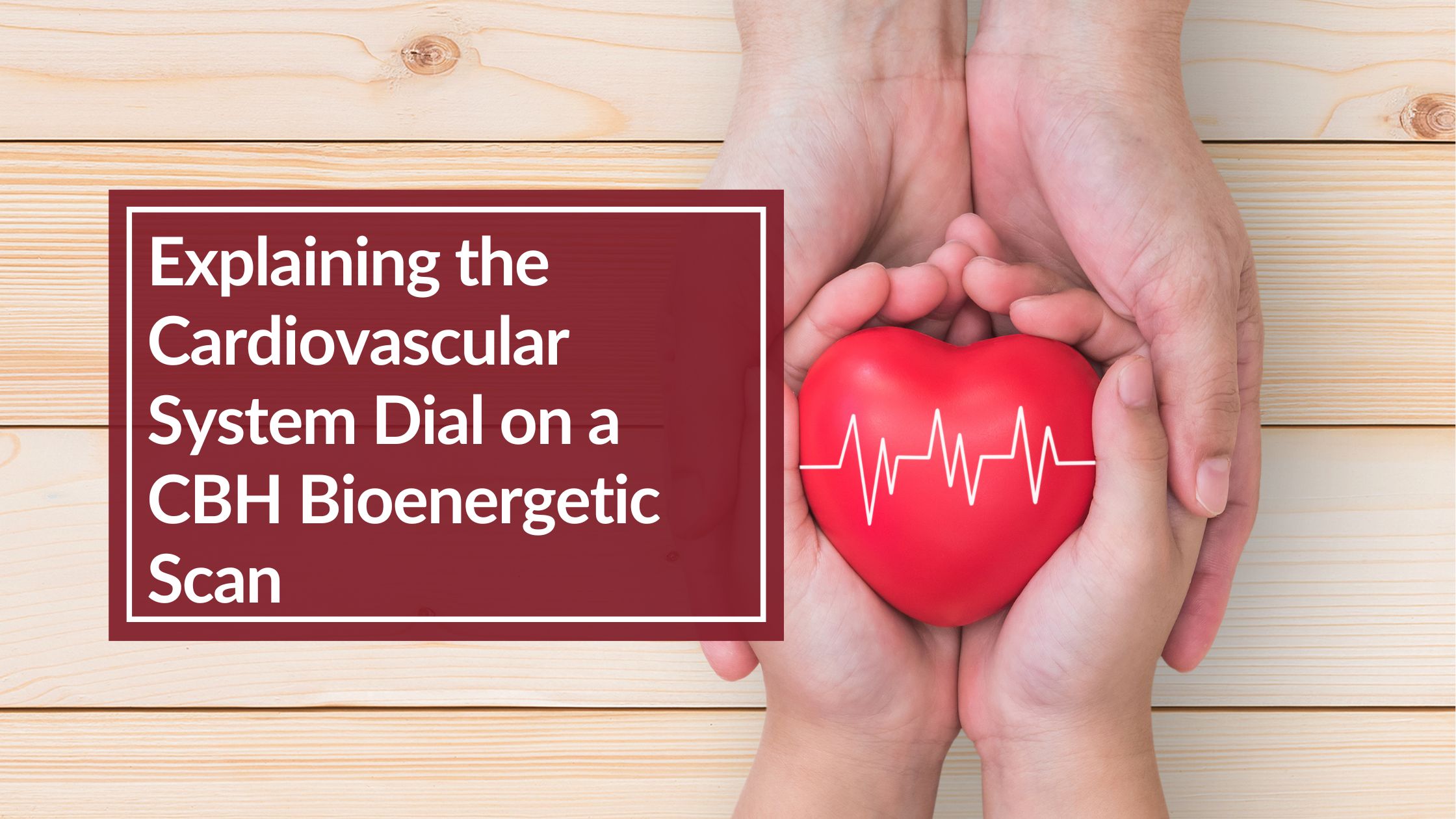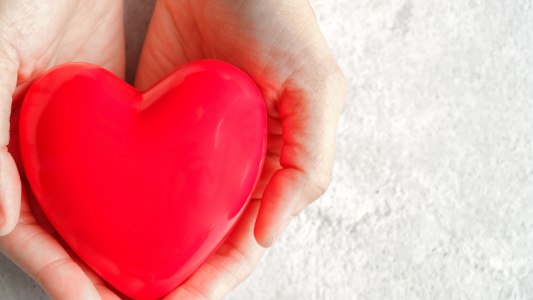
Explaining the Cardiovascular System Dial on a CBH Bioenergetic Scan
Explaining the Cardiovascular System is part of understanding the Cardio Dial on a bioresonance test, especially if you are new to bioresonance scanning. There are so many connections to that Cardio System on a CBH Energetics Full Scan, that we can’t cover them all in this blog post! Today we will be explaining the Cardiovascular System, to get you started on your Full Scan report results.
We’ll talk about the basic components, its functions, and its significance to our overall health.
Just as a city relies on a complex network of roads and highways to keep its day-to-day operations running smoothly, our bodies depend on a vital internal route known as the cardiovascular system. This intricate system is the lifeblood of our existence, fuelling our bodies with the nutrients, oxygen, and vital substances necessary for survival.
The Cardiovascular System, also known as the circulatory system, comprises the heart, blood, and blood vessels. It serves as the transportation highway for our bodies, carrying essential substances to every cell, tissue, and organ. Without this system, our bodies would cease to function, leading to inevitable death.
Explaining the Cardiovascular System and it’s Importance
Explaining the cardiovascular system and its significance cannot be overstated. It is the lifeline that maintains our body’s equilibrium, ensuring that each cell receives the sustenance it needs to thrive. To fully comprehend its importance, consider this: the cardiovascular system is responsible for delivering oxygen-rich blood to every corner of our bodies. The oxygen, a crucial element for life, fuels the cells and keeps us alive.
In addition to transporting oxygen, the Cardiovascular System, along with the Lymph System, also plays a role in waste removal. It carries away the byproducts of cellular metabolism, including carbon dioxide, which is expelled from our bodies through the lungs. This process of waste removal maintains the health and functioning of tissues and organs.
There are many systems linked when explaining the Cardiovascular System
- Respiratory: Lungs
- Lymph: part of the Immune System and detoxification. Waste is moved through the Lymph System which is twice as big as the Cardiovascular System, capturing the waste from blood vessels, to be carried away for elimination.
- Blood: the fluid that carries life
The Cardiovascular System is a key player in our Immune Response. It transports white blood cells and antibodies to areas under attack, helping our bodies ward off infections and heal wounds. The Cardiovascular System really seems like a superhero, silently working behind the scenes to keep us healthy and alive.
Explaining the Cardiovascular System: Components
The cardiovascular system is composed of three main components:
- The heart
- The blood vessels
- The blood itself.
This system sounds so simple but we assure you, it’s not! Each of these components plays a unique role, contributing to the overall functioning of the system.
- The heart is the big muscle of the cardiovascular system. This organ pumps blood throughout our bodies, ensuring that every cell receives the nutrients and oxygen it needs. This organ is beating an average of 100,000 times a day, and roughly 35 million times a year! PBS.org notes that the heart can beat an average of 2.5 million times in a lifetime! (1)
- Blood vessels, which include arteries, veins, and capillaries, form an intricate network that spans the entire body. Arteries and veins contain connective tissue, which is part of the Locomotor System. Arteries carry oxygen-rich blood away from the heart, while veins transport oxygen-depleted blood back to the heart.
- Blood, the transport medium of the cardiovascular system, is a complex fluid composed of plasma, red blood cells, white blood cells, and platelets. Blood is fluid, but thicker than water. It’s a bit sticky (2)
Capillaries, the smallest type of blood vessels, facilitate the exchange of oxygen, nutrients, and waste materials between the blood and the body’s cells.
Endothelial cells line all arteries, vessels and capillaries. Bartonella, a bacteria that is considered a Lyme co-infection, hijacks endothelial cells and impacts the Immune System’s ability to destroy them, as they also hide in there.
How Does the Cardiovascular System Work?
The muscular heart pumps oxygen-rich blood to the body’s tissues and organs through the artery network. After delivering its payload of oxygen and nutrients, the now oxygen-depleted blood returns to the heart via the veins, completing the circuit. The process of blood circulation is a continuous one, happening 24/7 without pause.

The muscles of the heart always work hard—twice as hard as the leg muscles of a person sprinting (1).
The heart is roughly the size of a fist, located in the chest slightly to the left of the midline. The heart has four chambers: two atria (upper chambers) and two ventricles (lower chambers). These chambers work together to pump blood throughout our bodies.
The heart’s primary function is to pump blood, but it does much more than that. It also maintains the body’s blood pressure, ensuring that blood flows at the right speed and in the right direction.
Additionally, the heart helps regulate the body’s temperature and pH levels, contributing to homeostasis, the state of stable internal conditions necessary for our survival.
There are some specific toxins that affect the heart including:
- Borrelia Burgdorferi, the spirochete bacteria that is the hallmark of Lyme Disease.
- Staphylococcus and Streptococcus also affect the heart and are the most common cause of bacterial endocarditis (3)
- Lead, cadmium and arsenic which are considered heavy metals. also affect the heart, through long term exposure (4).
- Epstein Barr virus, enterovirus, Coxsackie B, and cytomegalovirus can affect the heart (5).
Explaining the Cardiovascular System: Circulation
Blood circulation is the core of the cardiovascular system. It is the process through which oxygen, nutrients, hormones, and other vital substances are distributed throughout the body, and waste products are carried away for removal.
Circulation might be noted in the “fine print” or the notes on the bottom of the first page of your report. See a sample CBH Energetics Report here. Circulation can stress the Cardio Dial or the Blood Dial, as many different things impact circulation, including inactivity, heart health issues, and even Nervous System links.
For the purposes of this post, and explaining the Cardiovascular System we are talking about two types of blood circulation: systemic circulation and pulmonary circulation. Systemic circulation refers to the circulation of blood throughout the body, excluding the lungs. In contrast, pulmonary circulation involves the circulation of blood between the heart and the lungs.
The lungs can show up under Respiratory Stress on a Full Scan.
In systemic circulation, oxygen-rich blood is pumped from the left side of the heart and transported to the body’s tissues and organs via the arteries. After delivering its payload, the now oxygen-depleted blood returns to the heart through the veins, marking the end of systemic circulation.
In pulmonary circulation, the oxygen-depleted blood from the body enters the right side of the heart and is then pumped to the lungs, where it picks up oxygen and expels carbon dioxide. The now oxygen-rich blood returns to the left side of the heart, completing the circuit of pulmonary circulation.
Explaining the Cardiovascular System and Global Health
Coronary artery disease, the most common type of heart disease, is caused by the buildup of plaque in the arteries that supply blood to the heart. This buildup can lead to chest pain, heart attack, or stroke. Hypertension, or high blood pressure, is another common cardiovascular disorder. It increases the risk of heart disease and stroke, and if left untreated, can lead to heart failure.
The World Health Organization states that cardiovascular diseases (CVDs) are the leading cause of death globally (6).
There are many common cardiovascular disorders including arrhythmias (irregular heartbeats), heart valve diseases, and heart failure. These disorders can significantly impact a person’s quality of life and may even be life-threatening.
We do not diagnose or treat any health disorder. We always recommend visiting a licensed care professional for any health issues you may have, along with bioresonance testing.
Top Takeaways for your Cardiovascular System Health
It seems like every system requires a balanced diet, regular exercise, and a healthy lifestyle, doesn’t it?
A balanced diet is important for Cardiovascular System health. It should include plenty of fruits, vegetables, whole grains, lean proteins, and healthy fats. These foods provide the nutrients necessary for the heart and blood vessels to function properly. There are as many ways of eating as there are people! Science suggests including enough fiber in your diet, which helps support healthy cholesterol levels, and digestive health, along with a variety of foods that supply antioxidants, polyphenols, all vitamins and minerals, while keeping salt intake low, and blood sugar stable (7).
The Mediterranean Diet has a lot of heart healthy evidence behind it. What does this consist of? Lots of fruit and veg, with legumes and lean protein, along with plant fats like olive oil.
Regular exercise is another essential component of cardiovascular health. It helps strengthen the heart and blood vessels, lowers blood pressure, and improves circulation. Aim for at least 150 minutes of moderate-intensity exercise or 75 minutes of vigorous-intensity exercise each week.
This also increases Nitric Oxide in the body, which is related to circulation.
Avoiding tobacco, limiting alcohol intake, managing stress, and even managing emotions all contribute to heart health. Emotional Stress is a key risk factor in the health of your Cardiovascular System and the publication of the INTERHEART study linked emotional stress to ⅓ or heart attacks and strokes (8).
We all can have stressful situations and emotions in life, but when these are regularly occurring, there can be too much sympathetic nervous system stress, or sympathetic tone.
Relaxation techniques like breathing, yoga, meditation, and even music can go a long way in building stress resilience.
Maintaining a healthy cardiovascular system may seem like a daunting task, especially when it comes to lifestyle change. Pick one thing to change, or add in, and take small, doable steps to try to make new habits. We know change is not easy. It requires making mistakes, and being curious as to why they happen. Habits are complex! Here at CBH Energetics we believe that focusing in perfection will take away from your attempt at creating balanced health.
Changing lifestyle to support your cardiovascular system can look like adding 10 minutes of movement into your day, or adding one new recipe of antioxidant rich veg to your week.
Need support in making changes to your cardiovascular health, or any other lifestyle support. Book a call with one of our practitioners to make the process easier!
DISCLAIMER: Balanced Health, LLC/CBH Energetics and any parent, subsidiary, affiliated or related entities and companies do not provide medical advice or services. This post and the bioenergetic products and services offered by Balanced Health, LLC/CBH Energetics including, but not limited to, bioenergetic tests, bioenergetic scans, bioenergetic reports and related products and services (collectively the “Bioenergetic Products and Services”) are designed for educational and informational purposes only and are not intended to diagnose, treat, cure, or prevent any disease, condition, complaint, illness or medical condition and are not a substitute for professional services or medical advice. Testing is not used for the purpose of obtaining information for the diagnosis, prevention, or treatment of disease or the assessment of a health condition or for identification purposes.
